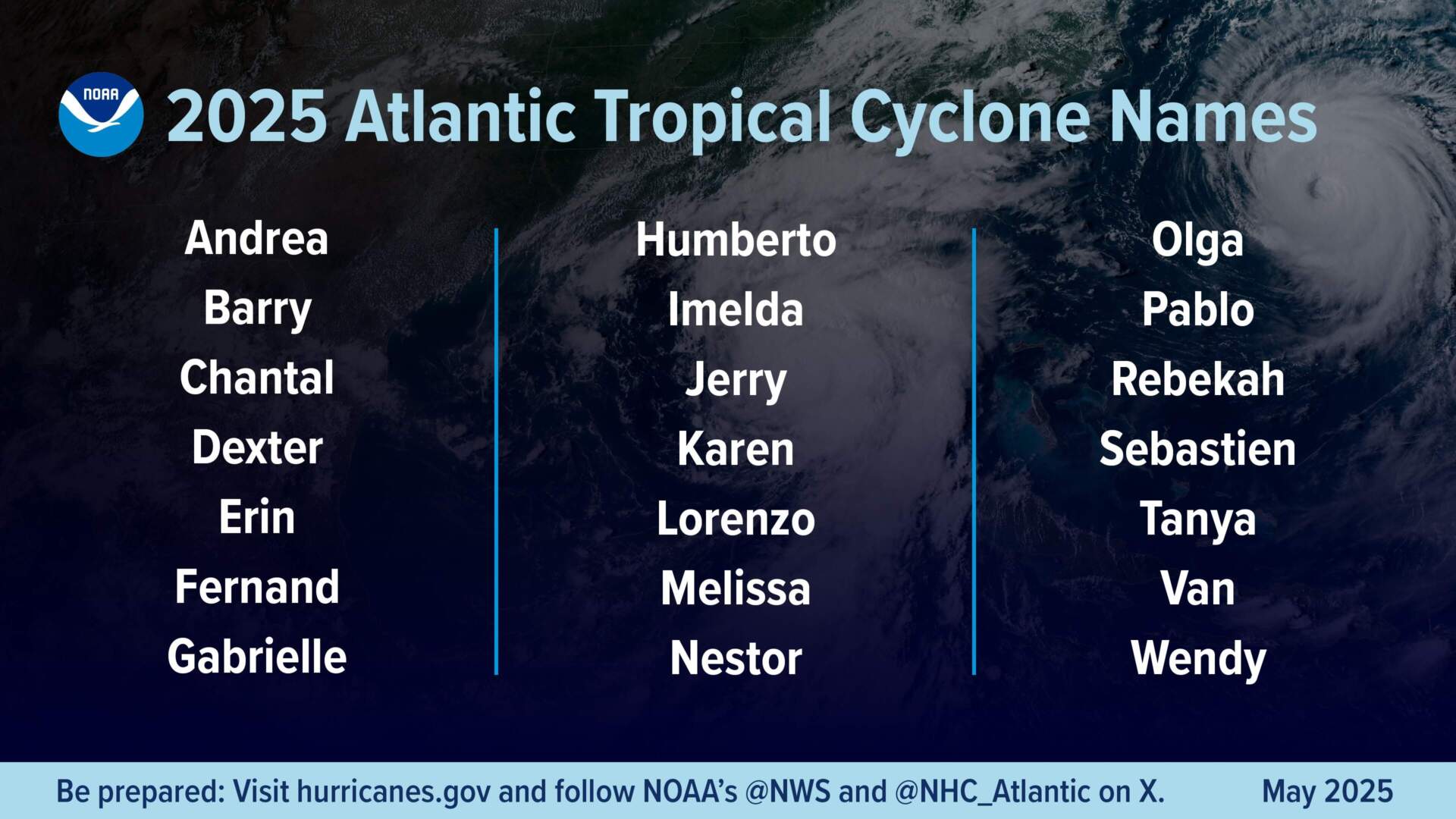Advertisement
Forecasters predict an 'above-normal' Atlantic hurricane season for 2025

Forecasters at the National Oceanic and Atmospheric Association are predicting an "above-normal" Atlantic hurricane season this year.
NOAA forecasters said Thursday they expect 13-19 named storms to develop, with up to five becoming major hurricanes, with sustained wind speeds of 111 miles per hour or faster.
The Atlantic's hurricane season lasts from June 1 to Nov. 30.

Several factors are contributing to the high prediction for the season, the agency said. The Pacific Ocean has shifted from an El Niño climate pattern, which tends to suppress Atlantic hurricane formation, to a neutral condition. And near record-high surface water temperatures in much of the Atlantic may help hurricanes and other large storms develop.
NOAA spokespeople did not answer questions about the role climate change may play in increasing the intensity of hurricanes and rainfall.
But scientists have long linked climate change and rising ocean temperatures to climate change, and warn that global warming increases risk for higher intensity storms that can affect both inland and coastal communities.
"Hurricanes are almost like the engine in your car," said Daniel Guilford, a scientist at Climate Central, a nonprofit that specializes in climate change research and communication. "They are giant engines that take energy in and then convert that energy into wind."
According to NOAA, warm ocean water provides energy the storm "sucks up," and increases the amount of moisture in the air. The warmer the ocean surface, the greater the likelihood of larger, more intense storms.
"A hurricane is going to be able to spin faster if it has more fuel available," added Guilford. "So as these sea surface temperatures continue to warm across our planet, we are seeing more tropical cyclones have stronger intensities."
Advertisement

In addition, rising sea levels, also linked to climate change, make shoreline areas more vulnerable to flooding, especially if a storm hits at high tide.
Last year forecasters predicted an "extraordinary" hurricane season, with 17-25 named storms and four to seven major hurricanes. 2024 proved to be NOAA's most accurate hurricane forecast to date, and also one of the deadliest and most costly hurricane seasons ever seen in the Atlantic, with 18 named storms and 11 hurricanes.
Five hurricanes made landfall in the U.S in 2024. The deadliest, Hurricane Helene, caused severe flooding to North Carolina and eastern Tennessee, and has been linked to 219 deaths and more than $78 billion in damages.
This year's outlook comes amid a period of growing uncertainty at the National Weather Service, which is overseen by NOAA. The forecasting agency has already lost more than 500 employees nationwide due to layoffs, retirements and buyouts. Many current and former NOAA scientists say ongoing staff and funding cuts are undermining data collection and weather forecasting, with potentially dire consequences.
The Trump administration has proposed cutting more than $1.5 billion from NOAA’s budget, eliminating "a variety of climate-dominated research, data, and grant programs, which are not aligned with Administration policy ending 'Green New Deal' initiatives."
In May, five former National Weather Service directors signed an open letter "to the American People" warning that further cuts could make accurate weather forecasting "an impossible task."
“Our worst nightmare is that weather forecast offices will be so understaffed that there will be needless loss of life," they wrote.
NOAA’s National Weather Service Director Ken Graham downplayed these concerns during the hurricane outlook announcement, noting that forecasting models are "as good as they've been," hurricane hunters are "ready to go," and the National Hurricane Center is "fully staffed."
"We'll be able to make sure that the warnings go out and we have the data that we need," he said.
